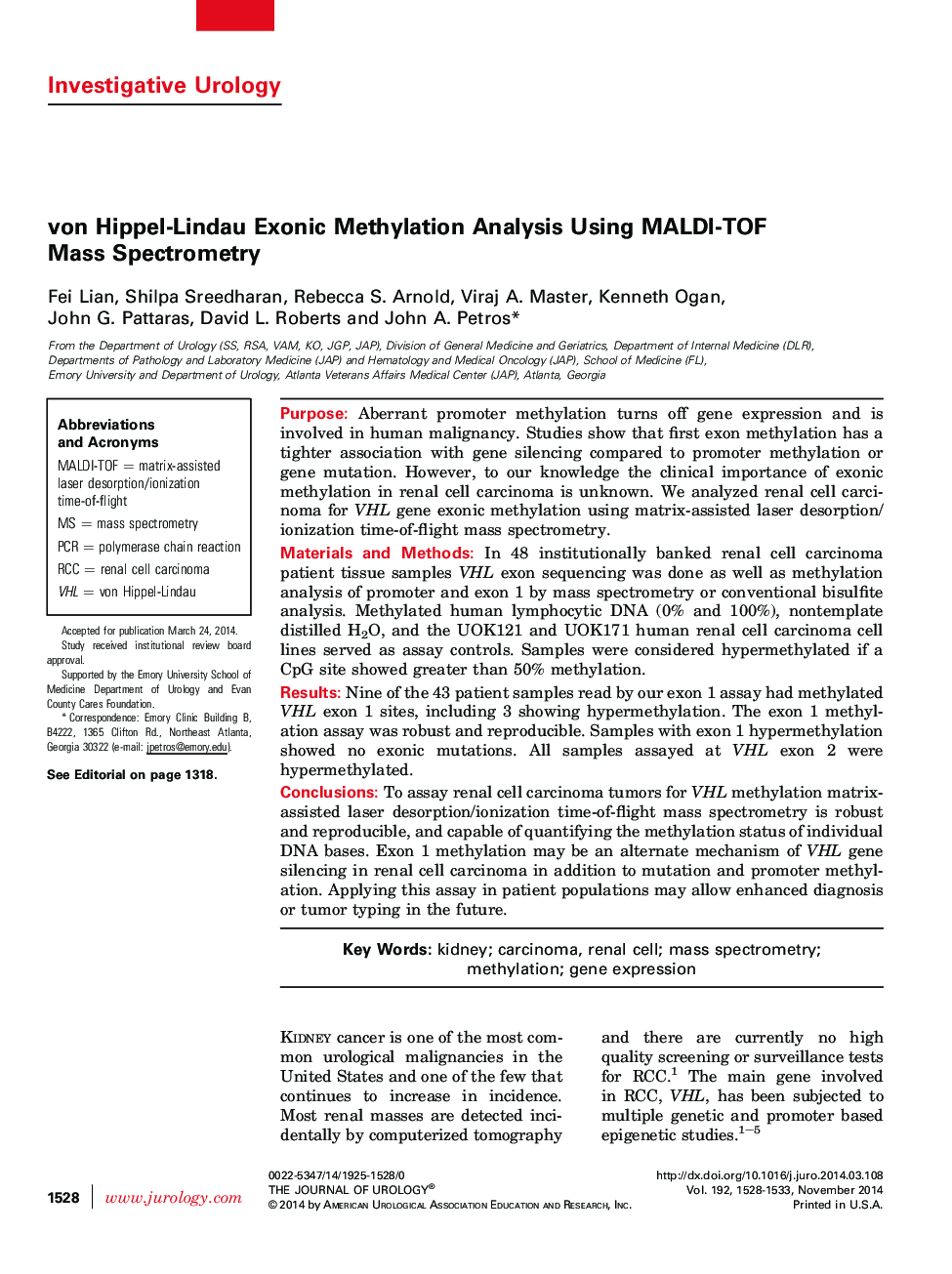| Article ID | Journal | Published Year | Pages | File Type |
|---|---|---|---|---|
| 3864016 | The Journal of Urology | 2014 | 6 Pages |
PurposeAberrant promoter methylation turns off gene expression and is involved in human malignancy. Studies show that first exon methylation has a tighter association with gene silencing compared to promoter methylation or gene mutation. However, to our knowledge the clinical importance of exonic methylation in renal cell carcinoma is unknown. We analyzed renal cell carcinoma for VHL gene exonic methylation using matrix-assisted laser desorption/ionization time-of-flight mass spectrometry.Materials and MethodsIn 48 institutionally banked renal cell carcinoma patient tissue samples VHL exon sequencing was done as well as methylation analysis of promoter and exon 1 by mass spectrometry or conventional bisulfite analysis. Methylated human lymphocytic DNA (0% and 100%), nontemplate distilled H2O, and the UOK121 and UOK171 human renal cell carcinoma cell lines served as assay controls. Samples were considered hypermethylated if a CpG site showed greater than 50% methylation.ResultsNine of the 43 patient samples read by our exon 1 assay had methylated VHL exon 1 sites, including 3 showing hypermethylation. The exon 1 methylation assay was robust and reproducible. Samples with exon 1 hypermethylation showed no exonic mutations. All samples assayed at VHL exon 2 were hypermethylated.ConclusionsTo assay renal cell carcinoma tumors for VHL methylation matrix-assisted laser desorption/ionization time-of-flight mass spectrometry is robust and reproducible, and capable of quantifying the methylation status of individual DNA bases. Exon 1 methylation may be an alternate mechanism of VHL gene silencing in renal cell carcinoma in addition to mutation and promoter methylation. Applying this assay in patient populations may allow enhanced diagnosis or tumor typing in the future.
